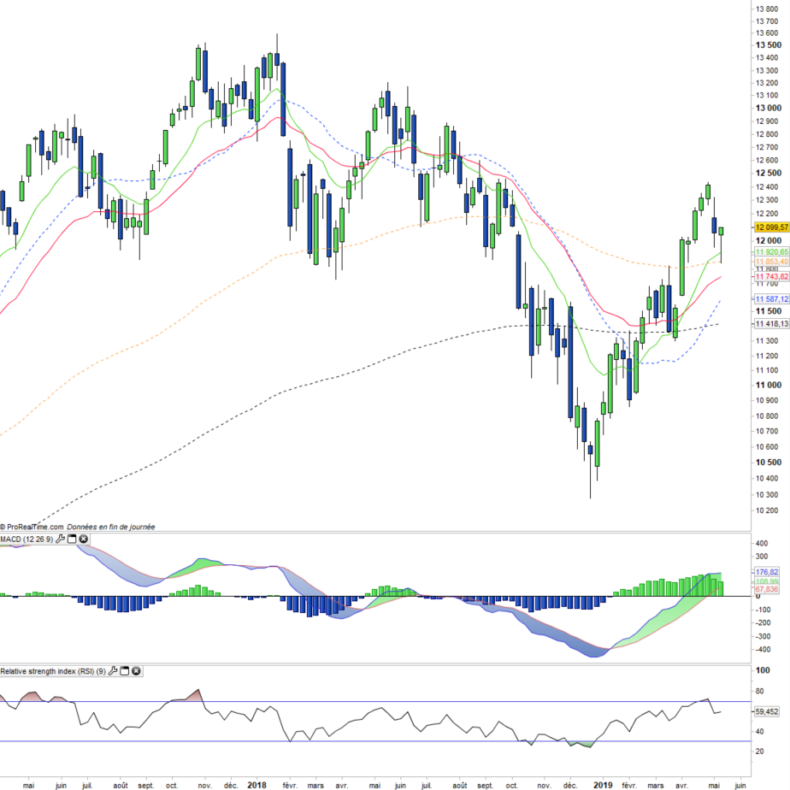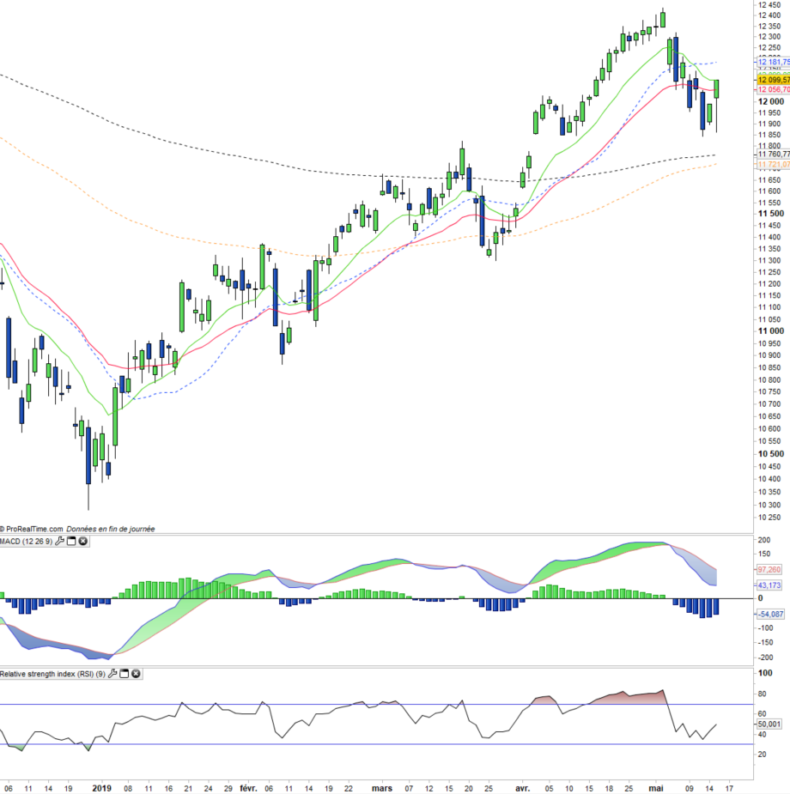DAX index - DAX - 15/05/19
Short Term trend: Positive (90/100)
Long Term trend: Positive (95/100)
(scores computed by our proprietary algorithms - cf methodology)
to access to our Buy / Sell signals
on ETFs and Stocks
Index profile
The top 10 stocks are mainly large industrial stocks such as Siemens or Bayer, while there are only 2 financial stocks in the DAX: Allianz and Munchener Rueck, the German master index is relatively small and mostly composed of large industrial groups.
Unlike the English, French or Italian indices, the DAX is also distinguished by the absence of large oil companies that weigh heavily in the weighting of the CAC40, FTSE100 or FTSEMIB40, which is double-edged according to the cycle specific to energy sector.
In addition, the financials weigh only 16% of the index, half for the insurance giant Allianz, so the banking sector has a low weight reflected in the well-known weakness of Deutsche Bank and Commerzbank. Conversely, the automotive and chemical sectors are heavier than the other European indices, while the technology sector is mainly represented by SAP (11%) whose market capitalization exceeds € 110 billion.
In summary, the DAX is a fairly strong index from a sectoral point of view which can make it evolve differently from other European indices.
German fundamentals are very solid (historically low unemployment rate at 5.5% and accelerated deleveraging up to 2020). The main risks concern Germany's main customers, namely the United Kingdom, which could suffer from Brexit, the US in political uncertainty and threatening it with a trade war, Russia which remains a difficult and aggressive neighbor and China because of its commercial practices which also tend to limit access to its domestic market to Western industrialists, particularly in the automotive and technology sectors.
After an increase of 6.9% in 2016, the DAX30 grew by 12.5% in 2017, more than the stoxx600 (+ 10.6%). But the index fell by 18.5% in 2018, which is a much lower performance than the Stoxx600NR (-10.7%). The DAX has just caught up since the beginning of the year and is now up 14.6%, compared to 13.7% for the Stoxx600 and 13.1% for the S & P500.
The underperformance at the beginning of the year can be explained by the large share of cyclical stocks (chemicals, cars, equipment goods) in the index and Germany's exposure to international trade endangered by the US protectionist attitude and fears about Chinese growth on which German companies are increasingly dependent. The possible reactivation of the trade war between the US and China is a significant risk for Germany, but at the same time D.Trump has just suspended tariff increases on auto exports for 6 months.
Instruments: DBXD (DB-x Tracker in Euro), DAXEX (iShares in Euro), DAX (Lyxor in Euro)
Technical analysis
Weekly data analysis
The weekly chart shows a return on moving averages (EMAs 12 and 26) which is turning into a rebound, following the bullish reaction in progress - to be confirmed at the end of the week - which shows a strong resilience of the DAX in a context yet unfavorable. The bullish reversal seems to be confirmed, but with increasing volatility. The technical situation of the DAX is getting stronger.
Daily data analysis
On the daily chart we see that the short-term trend is disrupted by a correction, but that gives rise to a bullish reaction leading to a return of prices on EMAs12 and 26. The next sessions will be key to determine if this rebound is enough to revive the trend, or if a deepening of the correction is necessary. A return of prices confirmed above short term moving averages at the end of the week would bode well for a return to trend.
Country Breakdown
| Germany | 100% |
Sector Breakdown
| Materials | 18% |
| Consumer discretionary | 16% |
| Financials | 16% |
| Information technology | 14% |
| Industrials | 12% |
| Health Care | 11% |
| Communication services | 5% |
| Others | 8% |
Top Ten holdings
| SAP | 11% |
| Allianz | 9% |
| Linde | 9% |
| Siemens | 9% |
| BASF | 6% |
| Bayer | 6% |
| Daimler | 5% |
| Deutsche Telekom | 5% |
| Adidas | 5% |
| Muenchener Rueckver | 3% |


